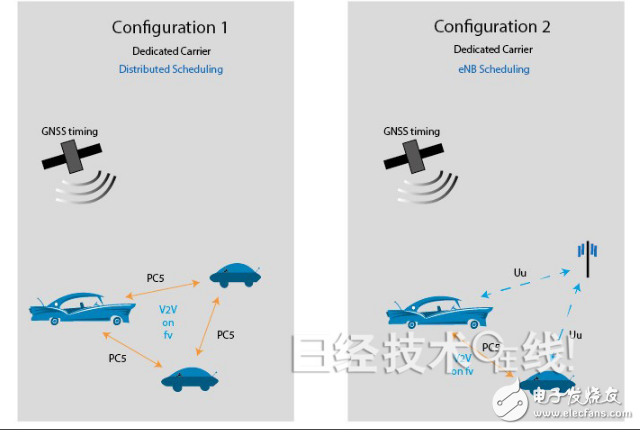The 3GPP (Third GeneraTIon Partnership Project) announced on September 26, 2016 that the first version of the V2X (Vehicle-to-Everything) is standardized. This was completed at the 3GPP RAN meeting held last week in New Orleans, USA.
According to reports, the V2X specification developed this time will be included in Release 14 scheduled to be completed in March 2017. As demand from the automotive industry continues to rise, 3GPP has been providing the ability to enhance automotive communications as part of the expansion of the LTE platform to new services. These functions include direct communication between cars, between cars and pedestrians, between cars and infrastructure, and via networks. However, in order to catch up with the release of Release 14, this specification focuses on the communication of the vehicle (V2V, Vehicle-to-Vehicle).
According to reports, V2V communication is based on the device-to-device (D2D, Device-to-Device) proximity communication service (ProSe, Proximity Services) included in Release 12 and Release 13. With the D2D interface (PC5) developed this time, high speed and high density of 250Kph can be achieved. The contents of PC5 import are as follows.
(a) Four DMRS (DemodulaTIon reference signal) symbols are added for the V2V subframe. These symbols are associated with speeds below 500kph and ITS (Intelligent Transport Systems) bands (primarily the 5.9GHz band) for high speed channel tracking.
(b) A new schedule allocation function has been imported. This allows for proper data resource processing in denser environments. The delay time is also improved for V2V.
(c) Introduced a distributed scheduling technique using semi-persistent scheduling (Semi Persistent Scheduling). One radio resource allocation can use multiple subframes, so that channel usage can be optimized.
According to reports, these contents can be extended to different frequency bands including the 10MHz band. The 3GPP lists the following two structures that use this function.

The difference between ConfiguraTIon 1 and 2 (picture from 3GPP)
(1) ConfiguraTIon 1: V2V scheduling and interface management are realized by adopting distributed scheduling technology in vehicle workshop communication. Time synchronization using Global Navigation Satellite System (GNSS).
(2) Configuration 2: The LTE radio base station assists in the scheduling of V2V data and the management of the interface. In this case, a one-frame dynamic scheduling (Dynamic Scheduling) method is adopted for one radio resource allocation. Time synchronization using Global Navigation Satellite System (GNSS). (Contributing author: Kato Shuko)
Air Handing System,Air Handing Unit System,Air Ventilation System,Air Heating Cooling System
Chongqing LDJM Engine Parts Center , https://www.ckcummins.com